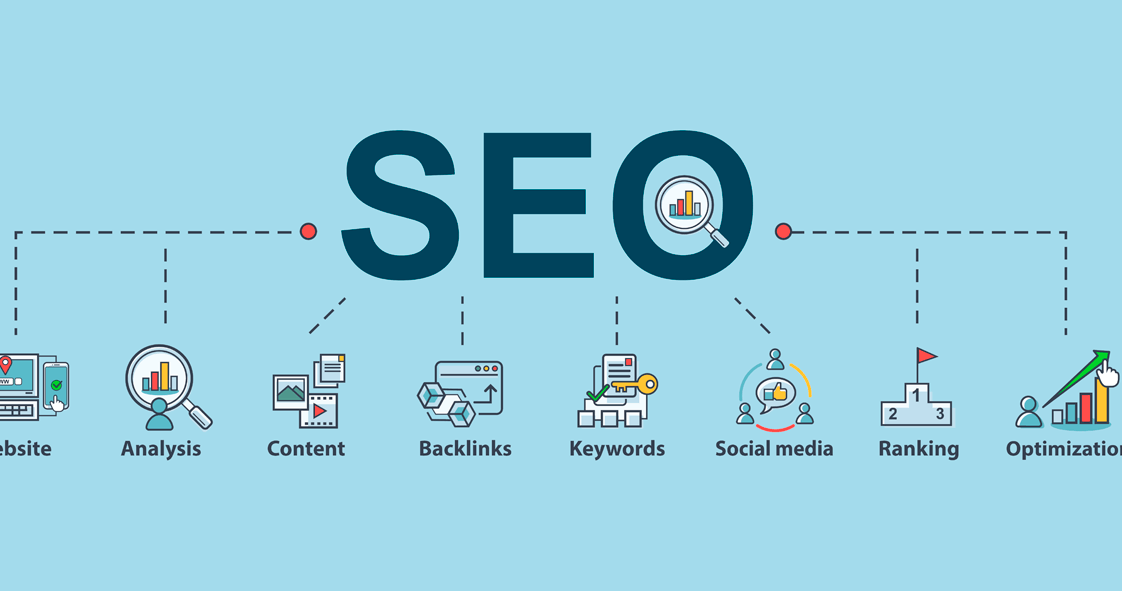SEO Optimization – What does it mean and how can it be used?
We get a lot of questions from our clients about SEO optimization. This is probably the same question that brought you here.
SEO can be a daunting task for new businesses or those who are reorganizing their websites. SEO isn’t always easy.
You can make changes to improve your website’s performance even if you don’t have an expert in the field. This article will explain what SEO is and how it works. It will also discuss the important factors that can affect your business.
Content
- What is SEO?
- What is the working principle of search engines?
- SEO Optimization: The Main Factors
- Factors that are related to the domain name of the site
- Web page level factors
- Site-level factors
SEO Optimization: What Does It Mean?
SEO stands for Search Engine Optimization. It is an acronym that stands for Search Engine Optimization. This refers to optimizing your website so you get organic traffic (or unpaid traffic) from search engines results pages. SEO is the process of making your website more appealing to search engines by changing its design and content. This is also known as SEO, or site optimization for search engines.
What’s the point? you might ask. Visitors are essential for any website. They can turn into customers and then traffic to your site. You need search engines, such as Google, to show your website at the top of search results pages for certain keywords (phrases).
Although SEO optimization can be quite complicated when you consider all factors that affect rankings, the basics of the process are not difficult.
After you’ve learned the basics of SEO, let us now discuss a few details.
What is the working principle of search engines?
Search engines strive to offer the best possible service to their users. This means that search engines must provide results that are not only high-quality, but also relevant to the user’s needs. How do they ensure that the search keywords are always the most relevant?
Search engines can be compared to libraries in the digital age. They store web pages instead of books. A search engine will examine all pages in its index to determine which keywords you are searching for and try to return the most relevant results. It uses an algorithm to do this. Although no one is able to explain how these algorithms work, we have some clues from Google.
Here is what they have to say about their “How Search Works” page:
Search algorithms consider many factors to provide the best information. These include the keywords of your query, relevance and usability, expertise of your sources, location, and settings. Each factor’s importance varies depending upon the nature of your query. For example, content novelty is more important when answering questions related to current news topics than it is when answering questions regarding different dictionary definitions.
Google is the most popular search engine, at least when it comes to web searches. It has the most reliable algorithm.
Search engines scan websites to assess how easy they are to navigate and what content is available. The search engine ranks user-friendly websites higher on the search results page based on its algorithm.
SEO Optimization: The Main Factors
SEO is a process companies use to make sure their website ranks high in search engines for the relevant keywords and phrases. Let’s take, for example, a blog post about building a treehouse. You will optimize your blog post to make it the first result when someone searches for “how to build treehouse”.

Website optimization can bring many benefits to your business. You can increase your search engine visibility by optimizing SEO. This allows you to reach as many customers as possible. You can increase organic and targeted traffic by creating appealing and well-constructed SEO content.
Let’s now learn more about SEO and how search engines work. Now let’s find out what factors influence your search rankings.
Although Google doesn’t want to disclose the algorithm, I have accumulated enough experience to understand the factors that determine the ranking of sites in search engine results.
Factors that are related to the domain name of the site
Keywords as in words from the field
Sites that start with the target keyword have priority over those that don’t (or have it at the end or middle of their domain).
2. The time the domain was bought
Here are the words of Google:
“Valid (legitimate domains) are typically paid for several years ahead, while temporary domains (illegitimate domains) rarely last more than one year. The domain’s expiration date is an important indicator of the legitimacy of a domain.
3. Domain extension
While domains with extensions.ro or.it can help you be more visible in certain countries, they can also limit your global reach. This is something you need to consider if you’re thinking about building a site or expanding in a specific area.
Web page level factors
Optimizing certain elements is necessary in order to ensure that each website page appears as high as possible within search results.
1.Title tag
The title tag, although not as essential as it was once, is still important. The main keyword must be included in the title tag, and preferably at its beginning. Moz says title tags that begin with a keyword perform better, than those that end with it.
2.The keyword must be present in the Meta description
Google doesn’t analyze keywords in meta descriptions. The meta description may contain a keyword that can impact the click-through rate. The likelihood that the user will visit your page to find the information that they need. Google ranking is affected by click-through rates.
3.Keywords in H1 tag and H2 tags are detected.
Subtitles are H1, H2, and H3. Google also uses subtitles to provide secondary relevance signals in addition to the Title tag.
4. The length of the URL, as well as keywords present in it
Google positioning is also affected by the presence of the main keyword within the URL text. Google prefers URLs that have fewer characters (under 17 characters), over those with many characters.
5. Frequency of keyword occurrences in the text
Google determines that a page with a keyword used more often than others is more relevant to a search. Identify the key keywords you are referring to in your article or presentation page. Use them as often as possible but not too much.
6. Content length of a page
Google prefers longer articles with more words to those that are shorter and less detailed. Backlinko conducted an SEO study that analyzed more than 1,000,000 Google search results and found pages with over 1800 words to be the most popular.
7. Use a linked table of contents (table of contents with anchors)
A table of contents in which each subchapter has been linked to by anchors (a type of internal links) is similar to building a map. This not only helps Google understand your page’s content better, but also makes it easier for the user to find the information they are looking for.
8. Your ability to cover a topic to a high standard (Topic authority).
Google rankings are affected by how well you cover all aspects of a topic. The pages that cover all angles of the topic are more likely than those that only cover the surface.
9. Page loading speed
Google and Bing both use page speed to rank websites. Based on the HTML code of a page, search engine spiders can accurately estimate your site’s speed. Google also collects data from Chrome users to determine page load times. This allows them to measure the page’s load time.
Here you can test the loading speed for your pages
10. Duplicate Content
Searches can be negatively affected if the site contains identical or slightly modified content.
11. Image optimization
Search engines use images to determine the relevancy of your content. This information is provided by the following elements: title, image name, description, caption, and other text. When describing or naming pictures, make sure to use keywords.

12. Frequency of page updates
Google is committed to providing its users with high-quality and current content. You should update your blog or website pages regularly with new information, and add images, videos, or other appealing elements to appeal to your audience.
13. Site optimization for mobile devices
Make sure you make new pages mobile-friendly every time you create them. Even though the site has been optimized for mobile devices there are still some content display issues. It could be a picture, video, or other element that is not properly set.
Mobile-friendly websites have an advantage in Google’s Mobile-first Index, as most searches are performed on mobile devices. Mobile device optimization is a crucial step that should not be overlooked.
Site-level factors
1.Site architecture
Google bots can easily index any page if there is a good architecture. Google requires a sitemap to ensure good indexing.
2.Uptime
The site’s availability, or the time it can be accessed by users. Ranking in Google is also affected by how accessible the site is, i.e. If not addressed promptly, frequent outages caused by poor maintenance or server problems could seriously impact the ranking in Google results.
3.Server location
Your site’s positioning in different geographic areas will depend on where it is located. If your potential clients live in Romania and your website uses the.ro extension then it is a good idea to have the server allocated on our territory.
4.The SSL certificate must be present
SSL certificates protect your customers’ personal information by creating a secure connection between their browser and your website. Because Google places security first, this is an important factor in search rankings.
5. Mobile optimization
Google wants sites optimized for mobile devices, as more than half of internet users use their mobile phones to browse the web. Google will even penalize sites that aren’t mobile-friendly.
6. Backlinks are a good thing.
Technically speaking, a backlink refers to a link between two pages. The URL code is added to the text or within an image. Being very helpful for SEO, backlinks can have a significant impact on your site’s position in Google results.
You now have a better understanding of SEO and how it works. Now you can make changes to your website in order to improve your SEO performance.
SEO optimization is a process that takes time and persistence to achieve results. SEO optimization is not something you can do overnight. It may take many months for the first benefits of SEO optimization to appear. Implementing SEO practices is the best way to attract potential customers to your site over time.
